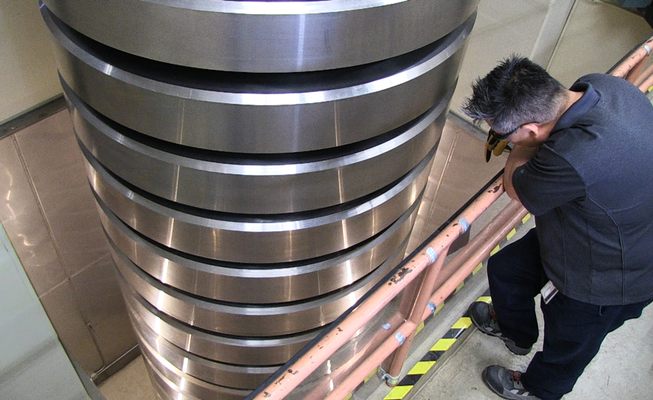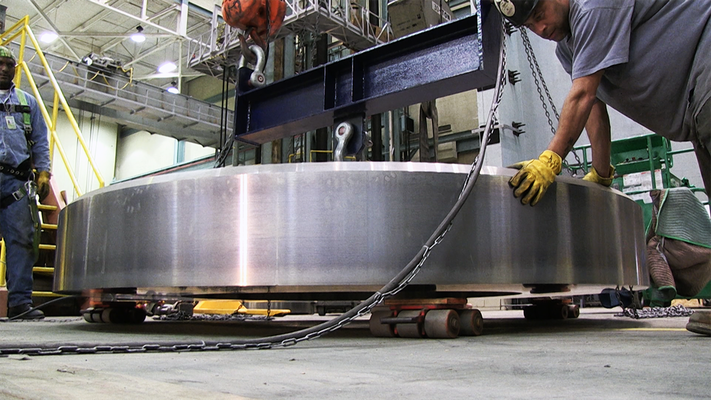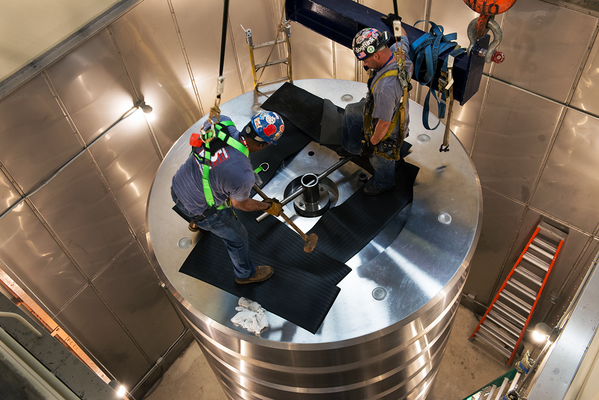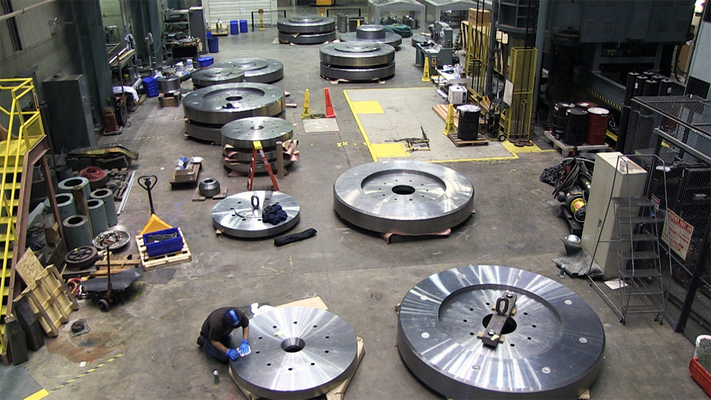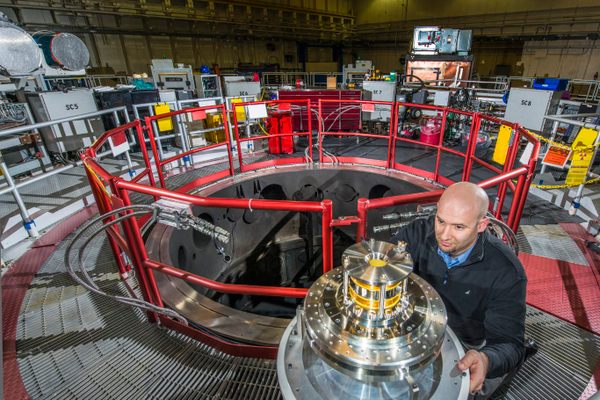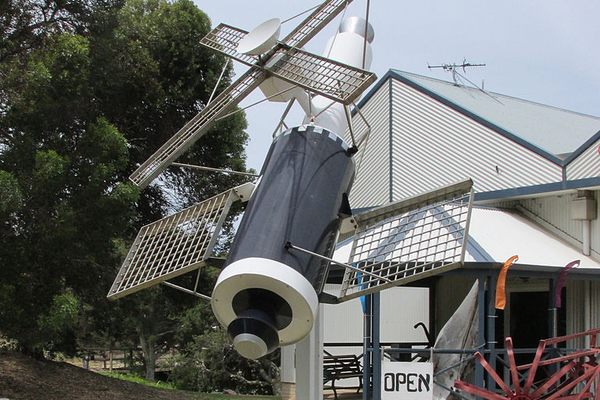About
It costs around $10,000 per pound to lift an object into space. With that kind of price tag, it’s important everything works on the first attempt. For any rocket launch to be a success, the force generated by the rocket has to be known and controllable, but with rockets routinely generating force measured in the Meganewtons, obtaining an accurate measurement is a herculean challenge.
Enter the National Institute of Standards and Technology (NIST) deadweight machine, a three-story, million-pound stack of steel disks that helps calibrate the technology that makes this later achievement possible. It's the largest machine of its kind in the world.
The NIST deadweight machine is used to calibrate devices called load cells that are used for measuring large forces, such as a rocket's thrust or an airplane wing's deflection. This astounding accuracy is a result of the process of comparison that yields each 50,000-pound weight. It starts with the official American kilogram (also housed at NIST). Then, larger weights are compared using incredibly precise balances.
The deadweight machine was built in 1965 during the heart of the Space Race. It operated continuously for 50 years until it was taken offline to be recalibrated in 2015. That entire process ended in 2016, and today it is once again fully operational, providing precise measurements for the U.S. government and the commercial aviation industry.
The National Institute of Standards and Technology considers its deadweight machine a national treasure.
Related Tags
Community Contributors
Added By
Published
August 29, 2017
Sources
- https://www.nist.gov/news-events/news/2016/06/million-pound-deadweight-machine-officially-open-business
- http://www.npr.org/sections/thetwo-way/2016/05/20/477926381/how-do-you-lift-a-million-pounds-of-stainless-steel-very-carefully
- http://www.engineering.com/AdvancedManufacturing/ArticleID/12323/Worlds-Largest-Deadweight-Machine-Completes-16-Month-Overhaul.aspx
- https://history.nasa.gov/presrep00/pages/doc.html
- https://www.nist.gov/pml/pml-working-you/ready-take-thanks-nists-million-pound-deadweight-machine


